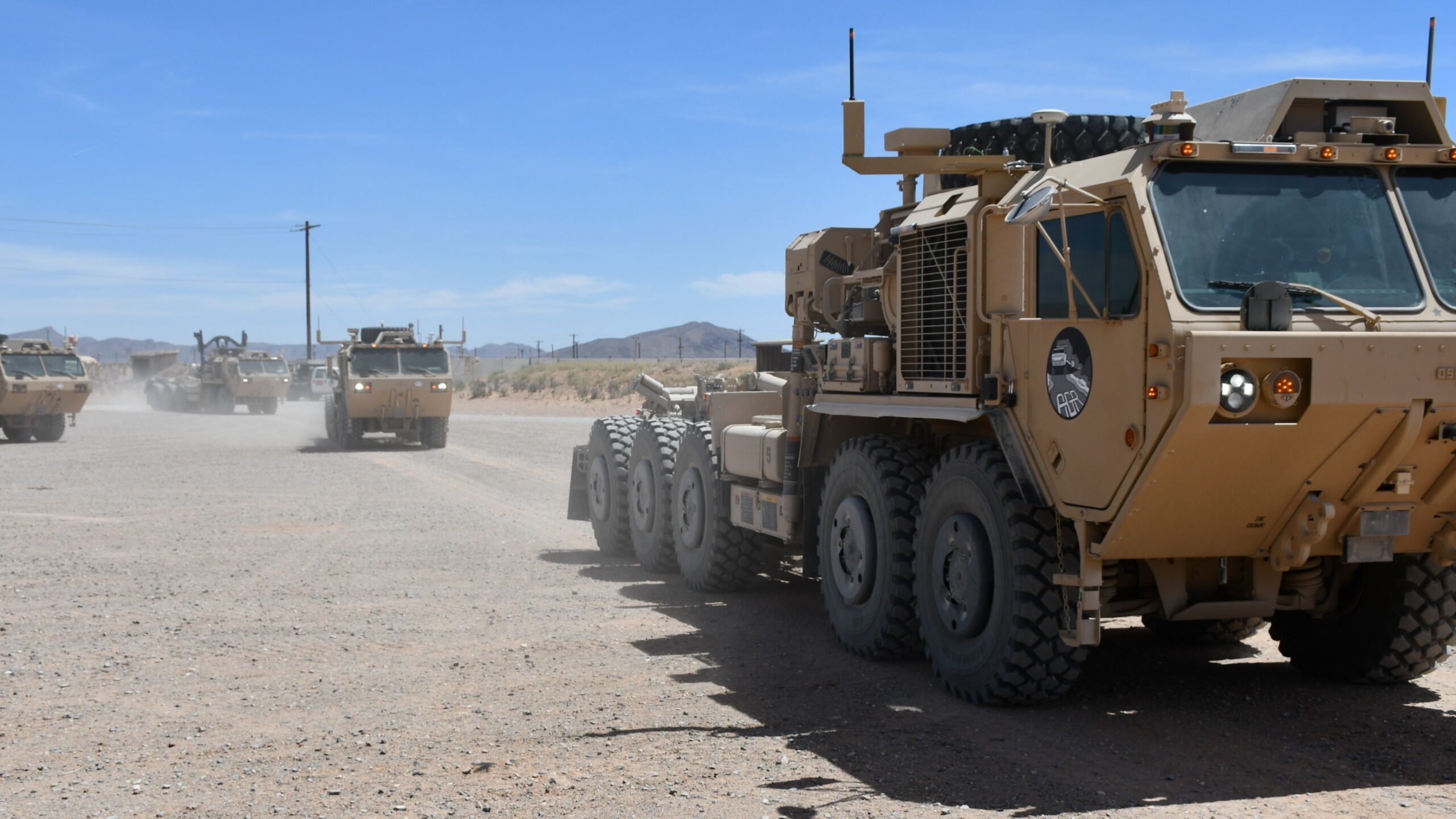
A convoy of semi-autonomous palletized load system vehicles roll past attendees during a vehicle dedication ceremony at Fort Bliss for 16 fallen Soldiers of the Army’s 88 Mikes. (U.S. Army photo by Jerome Aliotta/Released)
NDIA TACTICAL WHEELED VEHICLES CONFERENCE: The US Army will likely add new payloads to its small unmanned supply vehicle, called the Small Multipurpose Equipment Transport (S-MET), under a second iteration of the platform, according to a lead Army official.
Col. Shane Sullivan, program manager for force projection at Program Executive Office Combat Support and Combat Service Support, told the NDIA Tactical Wheeled Vehicle Conference that a new requirements document for the next iteration of S-MET should be out “in the next year or so.”
The S-MET vehicle is an all-terrain, unmanned vehicle designed to follow alongside soldiers with up to 1,000 pounds of supplies or spare gear over 60 miles in 72 hours. It also provides external power to recharge hardware, such as night vision goggles or radios.
“It’ll come with some modular mission payloads that will go on top of that. I don’t know what those are going to be, per se,” Sullivan said.
However, Sullivan noted that there are several potential options to go on top of the S-MET bed, such as a weapons system, a communications retransmission asset, extra batteries or a launch platform for small drones.
“The sky is the limit,” he said.
Right now, the Army thinks it will need 2,200 vehicles in the second increment. The Army is currently buying 624 S-METs from General Dynamics Land Systems through 2024 under $164 million contract. The S-METs the Army has now, Sullivan said, are currently undergoing prototyping with the 101st Airborne Division. The service is planning to field those vehicles at the end of fiscal 2022 or first quarter of fiscal 2023, he said.
“The Army’s looking at, how, how good is this? And what would we change for a larger procurement?” Sullivan said.
S-METs are just one part of the Army’s broad and expanding portfolio of robotic vehicles in development, including a series of Robotic Combat Vehicles — light, medium and heavy — to perform autonomous functions of the battlefield.
The service is currently working on an autonomous “leader-follower” convoy program, in which autonomous “follower” vehicles in a convoy match the route and speed of the lead vehicle. According to Brig. Gen. Michelle Donahue, quartermaster commandant at the Army’s quartermaster school, where sustainment soldiers are trained, the next move is to remove soldiers from the leader vehicle at the front of the convoy and place them in a command vehicle elsewhere in the formation to see how the lead vehicle does on its own. Sullivan said that the leader-follower technology would be tested at training center rotations later this year.
The Army is also looking to built autonomy capabilities into future platforms, including its Common Tactical Truck program. The service’s request for prototype proposal for that program was released on Feb. 25, after a brief pause as the Army revisited its prototyping plans. That program is being designed with eye toward future capabilities.
“The CTT program is intended to redesign the fleet to integrate commercial technologies such as advanced driver assist systems, drive-by-wire foundation for future autonomy, fuel efficiency, exportable power, and prognostics and predictive maintenance,” Donahue said. “This will allow the army to modernize the pace of industry, integrating new technologies as they are developed.”
Australia tops up Ukraine military aid with $100M
Australia has already supplied Ukraine with 120 Bushmaster vehicles, six 155mm howitzers, 56 M113 armored vehicles, 14 special operations vehicles and its signature cardboard drones.


























